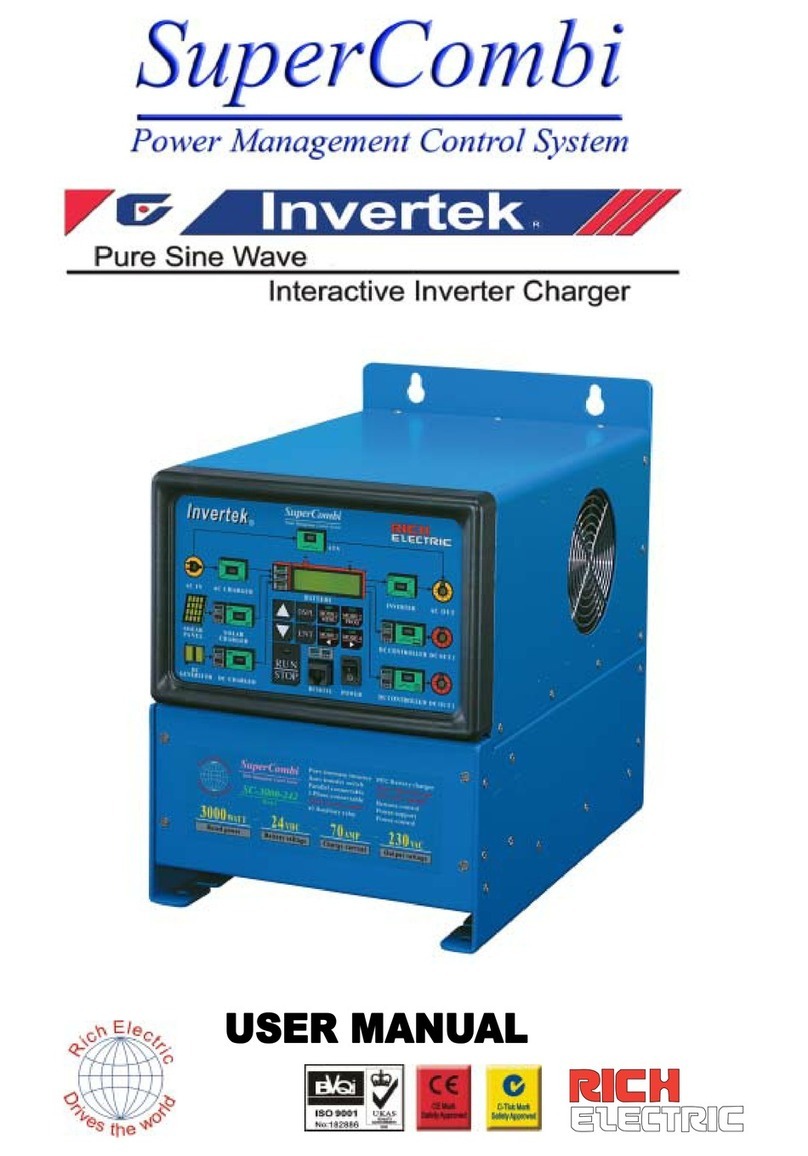6
I. Pre-installation Information:
Before installing your inverter, please make sure that you have
appropriately-sized batteries. A battery that is too small will not
allow the inverter to perform to its full specification.
J. Electrical Requirements:
DC input voltage of the inverter must be the same as the battery
bank voltage.
DC cabling must be connected to the correct polarity terminal of
the battery bank (Red=Positive, Black=Negative).
DO NOT extend the DC cable length to the inverter unless you
are prepared to increase the diameter of the cable. If this is
necessary consult your supplier/installer for advice.
DO NOT connect AC power to the output of the inverter: THIS
WILL DAMAGE THE INVERTER.
Between the inverter and any generator / mains supply, install a
double pole “break-before-make” changeover switch, switching
both line and neutral.
K. Installation Requirements:
1. Where to install: The power inverter should be installed in a
location that meets the following requirements
Dry – Do not allow water to drip or splash on the inverter, free of
salt or moisture-laden air.
Temperature – Ambient air temperature should be between 0℃
40℃.
Safety – Do not install in a battery compartment or other areas
where flammable fumes may exist, such as fuel storage or
engine compartments.
Ventilation – Allow at least one inch of clearance around the
inverter for airflow. Ensure the ventilation openings on the rear
and bottom of the unit are not obstructed. The installation site
should not be susceptible to temperatures in excess of 50℃.
Dust-free – Do not install the inverter in an environment where
either dust, wood particles or other filings/ shavings are present.
These can pull into the unit blocking the cooling fan.
Close to battery/batteries – Avoid excessive cable lengths
(Mount the inverter between one and two meters from the
batteries) but do not install the inverter over or in the same
compartment as batteries. Use the recommended wire lengths




























